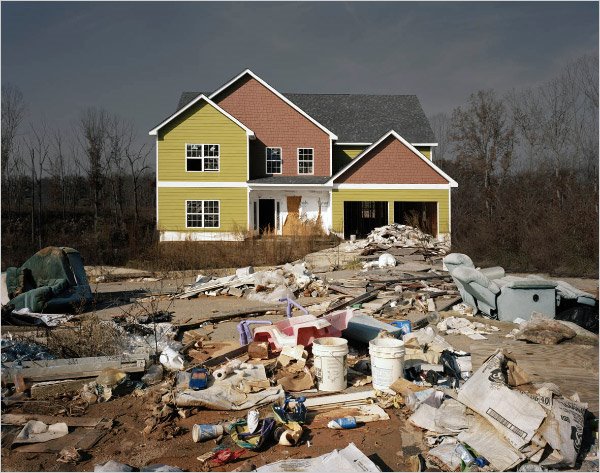
© 2008 Bert Rodriguez. The End-A project installed during the Whitney Biannual. As someone passes through the opening doors of the elevator a motion sensor triggers an endless looping soundtrack. The soundtrack was designed by the artist created from sections of end theme music from films. As the artist sees newer movies, more music is added until his death when the soundtrack will become completed.
Well, It's the end of many things now for me. School is finished. The Thesis Exhibition is down. And Summer access to the School's Computer Lab and printers is also over because they are renovating many parts of the school. So, we are now officially locked out from using the lab like we did last year to work on summer projects.
For now like so many photographers in New York I will be using Print Space when I need to make a work print or scan some film. While it is surreal that School is finished - with the end of school brings the excitement of the challenges ahead. It's terrifying graduating now but at least the economy appears to be getting better. If I had graduated last year we would have been flying into the job market as the economy entered the worst collapse since the great depression. Hopefully, that is behind us and jobs will be coming back to all the working photographers and artists. And collectors will begin to buy more of the art that they enjoy. Go stock market go!
I'm really happy with how our Thesis Exhibition turned out. It was sad to bring home the work but the end also means new beginnings for me and the development of the series. Check out all the great blog love we got below. Thanks to all the bloggers who posted the information for the show or posted links to their favorite artists.
Press from the SVA MFA 2009 Thesis Exhibition
whats the jackanory ? - sva mfa show
Two Days Left for SVA MFA '09 Show | Gallery Hopper
ArtCat - Chelsea - SVA (West 26th) - MFA Photography, Video and Related Media Department presents Thesis Exhibition
Hey, Hot Shot! - SVA MFA 2009 Thesis Show
SVA (West 26th): MFA Photography, Video and Related Media Department presents Thesis Exhibition | .FILAS, n{e}ws
Recent MFA Shows' Selections. | digressions: a blog
Zoe Strauss: SVA MFA Photo Thesis Exhibition
wan.der.lust.ag.ra.phy
Schauraum 3 – thesis show at the FH Dortmund « Daniel on photography
SVA.MFA. « Prison Photography
ARTmostfierce: SVA 2009 MFA Thesis Exhibition
The Exposure Project: Jessica Bruah's No Lake This Summer
Tina Schula - Conscientious
Maureen Drennan - Conscientious
Carlos Alvarez Montero - Conscientious
i heart photograph: yiftach belsky
School of Visual Arts MFA Photography and Related Media Thesis Exhibition | Artis
As for this blog I hope to keep it up. I have been thinking about what it should morph into now that school is out. I will be experimenting with taking some of the papers I have written in school and turning them into long blog posts. If they work I will continue to write longer articles on art in this blog in the future. So, to recap, an end is sad but the beginning is terrifyingly exciting. To quote my favorite wordsmith:
"What is that feeling when you're driving away from people and they recede on the plain till you see their specks dispersing?--it's the too- huge world vaulting us, and it's good-by. But we lean forward to the next crazy venture beneath the skies." -Jack Kerouac




